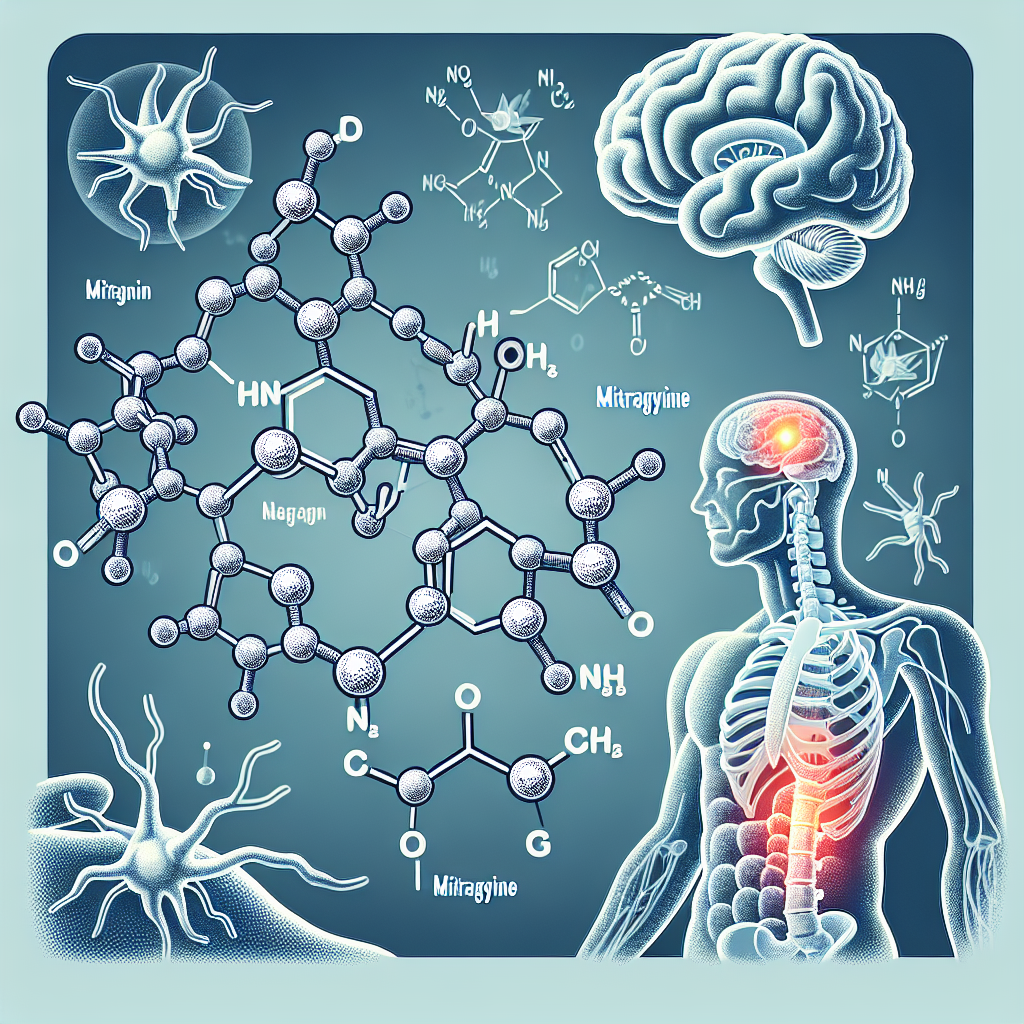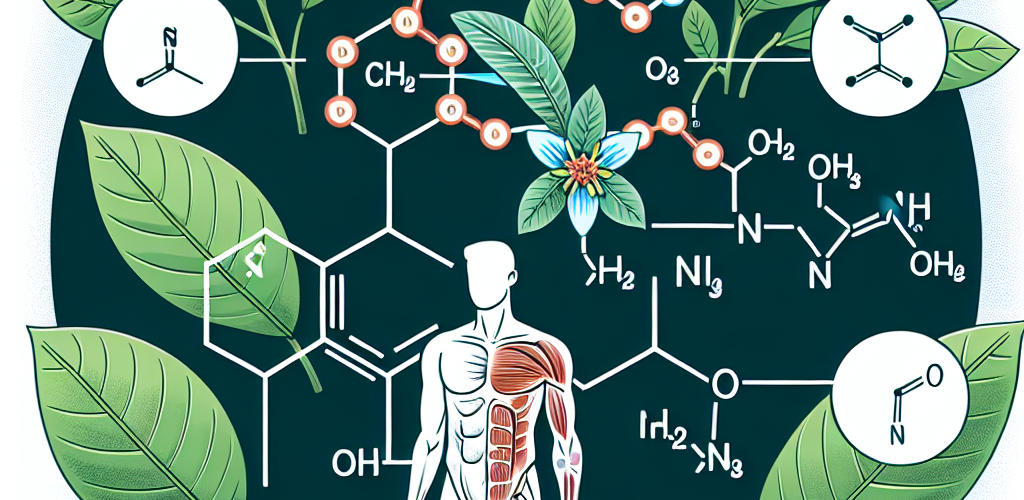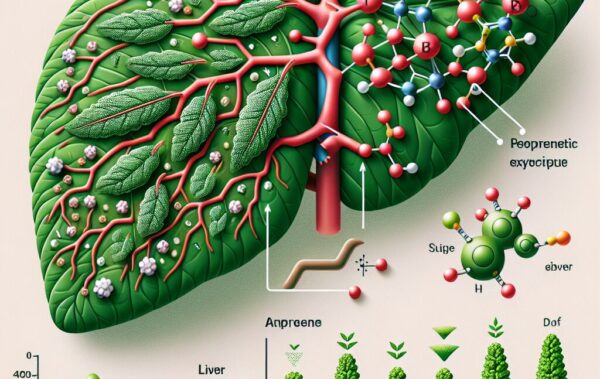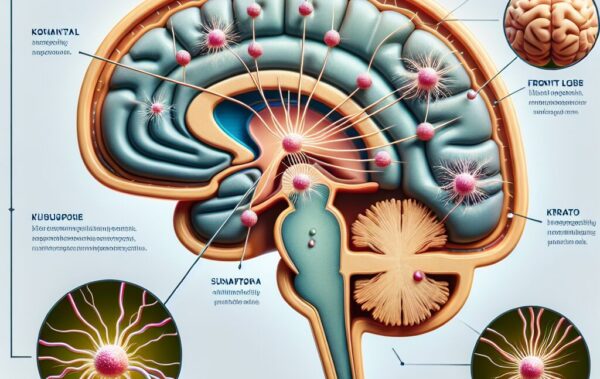- Chemical composition of kratom and mitragynine
- Mechanisms of action: How mitragynine interacts with the pain pathway
- Comparative analysis of mitragynine and conventional analgesics
- Safety profile and potential side effects of mitragynine
- Frequently Asked Questions (F.A.Q.) about mitragynine and pain relief
Kratom, known scientifically as Mitragyna speciosa, is a tropical evergreen tree native to Southeast Asia, and has been traditionally used for its medicinal properties for centuries. It contains a complex blend of various chemical compounds, of which mitragynine is the most prominent and is largely responsible for its pain-relieving effects. Mitragynine is an indole-based alkaloid, and whilst being the most abundant, it is just one of over 40 compounds found in kratom, including other alkaloids such as 7-hydroxymitragynine, which can also influence the plant’s effects.
The chemical composition of kratom leaves varies not only based on the geographical origin of the plant but also due to different vein colors and the maturity of the leaves. The green, white, and red-veined strains of kratom are reputed to have distinct properties and varying ratios of mitragynine, contributing to their unique effects.
Mitragynine itself works by interacting with certain receptors in the brain, which helps to alleviate pain. Its pain-relieving properties may be compared to pharmaceutical opioids, but its molecular structure and action on the brain receptors are distinct. Understanding its chemical structure is crucial for elucidating its pharmacological effects, and thereby informing the safe use of kratom for pain relief.
Considering the interest in alternative pain management solutions, it is not surprising that many users have turned to kratom as a natural remedy. With a range of kratom products available, users may select from formats such as powders, capsules, or liquid extracts, each offering different concentrations of mitragynine.
It is critical to note that while mitragynine is a key player in alleviating pain, the total alkaloid profile of kratom leaves and the synergy between these compounds also play a significant role in its pain-relief properties. This holistic interaction of biochemicals within kratom is part of what makes it an intriguing subject for both users and researchers alike.
The chemical composition of kratom dictates not only its potential for pain relief but also influences its safety and efficacy. Continued research into mitragynine’s specific mechanisms and the associated risks and benefits will be paramount for those looking to incorporate this natural product into their pain management regimen.
In conclusion of this section, mitragynine’s presence at substantial levels within kratom leaves is the cornerstone of its purported medicinal effects, notably pain relief. However, as with all medicinal substances, the complexity of its composition and the need for further research to fully understand and harness its properties cannot be overstressed.
Mechanisms of action: How mitragynine interacts with the pain pathway
Mitragynine asserts its pain-relieving qualities predominantly through its interaction with the opioid receptors in the brain and spinal cord. These receptors are part of a broad network known as the pain pathway, which is responsible for transmitting pain signals from the body to the brain. When mitragynine binds to these receptors, especially the mu and delta opioid receptors, it modulates the pain signal processing, thereby diminishing the sensation of pain that reaches the conscious mind. In simpler terms, it acts similarly to how a dimmer switch controls the brightness of a light bulb, by regulating the intensity of pain signals.
Unlike traditional opioids, which also target these receptors, mitragynine does not create the same strong degree of binding or activation. This results in a reduction in pain without the profound sedation or respiratory depression commonly associated with potent opioids like morphine. Additionally, mitragynine exhibits a biased agonism, meaning it activates some signaling pathways over others within the receptor, which is believed to contribute to its unique effect profile and potentially lower the risk of side effects such as addiction and physical dependence.
The analgesic properties of kratom are not solely due to mitragynine’s direct agonist activity. It also interacts with other receptors in the brain, such as serotonergic and adrenergic receptors, which can influence mood and reduce pain through additional mechanisms. For instance, enhancement of serotonergic and adrenergic signaling can lead to an uplifted mood and diminished perception of pain, which is an added benefit for individuals seeking holistic pain management.
A significant advantage of kratom, particularly in the context of pain relief, is its accessibility in various forms catering to user preferences. Those seeking quick and potent effects often gravitate towards liquid extracts or tinctures, as these can deliver concentrated amounts of mitragynine for prompt relief. On the other hand, some prefer the more gradual release and longer duration of effects from kratom powder or capsules, which facilitate easier and more controlled dosing.
It’s important to bear in mind that while mitragynine is the most well-known alkaloid in kratom for its analgesic properties, the totality of alkaloids and the entourage effect they may produce should not be overlooked. The diversity of alkaloids within kratom could potentially work in synergy, enhancing the therapeutic effects and possibly mitigating the risk of adverse reactions when compared to isolated compounds or synthetic drugs.
In the quest for pain relief, the multifaceted approach of mitragynine within kratom positions it as an attractive option for those looking for alternatives to conventional analgesics. Aside from direct action on the pain pathway, it offers a spectrum of effects, due to its complex interaction with the central nervous system, that may benefit overall well-being and palliative care, all while contributing to the expanding compendium of natural analgesics available to consumers today.
Comparative analysis of mitragynine and conventional analgesics
Mitragynine, as a natural compound found in kratom, has garnered attention for its potential in offering pain relief similar to that of conventional analgesics. In comparing mitragynine to traditional painkillers, several key points emerge that highlight the differences between natural and synthetic approaches to pain management.
First, the mechanism by which mitragynine provides pain relief differs significantly from those of prescription opioids. While both bind to opioid receptors in the body, mitragynine’s tendency for lower receptor binding affinity translates into less risk for certain side effects commonly associated with opioids, such as respiratory depression and constipation.
Another distinction lies in mitragynine’s capability to evoke a less intense activation of the brain’s reward system, potentially reducing the risk of psychological dependence. This contrasts with stronger opioids that typically produce more profound euphoria, increasing the likelihood of misuse and addiction.
Moreover, many users of kratom report fewer withdrawal symptoms when discontinuing use, suggesting that mitragynine may have an advantage in terms of dependency profile compared to conventional analgesics. Although additional scientific studies are required to fully understand the extent of these benefits, anecdotal evidence points towards a more favorable withdrawal experience for many individuals.
Key differences between mitragynine and synthetic analgesics include:
- Mitragynine has a lower affinity for opioid receptors, resulting in fewer side effects.
- The risk of dependency may be lower compared to traditional opioids.
- User reports suggest more manageable withdrawal symptoms with kratom use.
- Mitragynine exhibits biased agonism, selectively activating receptor pathways.
As for efficacy, some studies indicate that mitragynine is less potent than certain synthetic opioids. This is not necessarily a drawback—less potency can mean greater safety and a wider therapeutic margin. Patients seeking pain relief without the heavy sedation of stronger analgesics might find mitragynine’s milder properties to be beneficial.
A comparative analysis of the therapeutic effects reveals that mitragynine may hold its own in the realm of pain management, particularly for chronic pain where the long-term use of pharmaceutical opioids poses evident risks. With a diverse array of kratom products available, ranging from Bali kratom powders to red vein capsules, users have the flexibility to explore personalized pain relief options that align with their specific needs and preferences.
Since kratom products come in various concentrations and strains, the role of informed consumer choice is paramount. While one person may opt for the convenience of kratom capsules, another may prefer the nuanced control offered by powders.
To better visualize the properties of mitragynine versus conventional analgesics, consider the following table:
| Feature | Mitragynine | Conventional Analgesics |
|---|---|---|
| Affinity for Opioid Receptors | Lower | Higher |
| Risk of Dependency | Potentially Lower | Higher |
| Risk of Respiratory Depression | Lower | Higher |
| Typical Withdrawal Symptoms | Milder | More Severe |
| Spectrum of Effects | Broad due to various alkaloids | Specific to type of analgesic |
Finally, when discussing the comparative analysis, we must acknowledge that, despite promising aspects of mitragynine, more scientific scrutiny is necessary to develop a comprehensive safety profile. Conventional analgesics have undergone extensive clinical testing, which provides a clear understanding of their benefits and risks. Although kratom’s pain-relieving properties appear to offer a natural alternative, advocating for its use without acknowledging the need for further research would be incomplete.
It’s also essential to consider the legal and regulatory environment surrounding kratom, which may influence its accessibility and perceived legitimacy as an analgesic. As regulations continue to evolve, the comparative analysis of mitragynine must keep pace, integrating not only biochemical and pharmacological data but also legal and societal implications.
Moving on to the next section, we will delve into the safety profile and potential side effects of mitragynine, which are essential considerations for anyone interested in using kratom for pain relief.
Safety profile and potential side effects of mitragynine
 As we continue to examine the effects of kratom, particularly mitragynine, understanding its safety profile is crucial to assessing its overall utility for pain relief. Much like any substance with medicinal properties, mitragynine has potential side effects that users should consider.
As we continue to examine the effects of kratom, particularly mitragynine, understanding its safety profile is crucial to assessing its overall utility for pain relief. Much like any substance with medicinal properties, mitragynine has potential side effects that users should consider.
Despite being a key alkaloid in kratom responsible for many of its therapeutic effects, mitragynine is not without its potential drawbacks. Side effects associated with kratom use are typically dose-dependent and can include nausea, constipation, dizziness, and dry mouth. In higher doses, more serious side effects such as increased heart rate, agitation, and in rare cases, seizures, may occur. It is important for users to pay close attention to dosing and to opt for reputable sources when purchasing kratom products, such as those found at a well-regulated kratom shop.
Beyond immediate side effects, there are broader considerations with regards to the long-term use of kratom. Dependence can develop with continuous, high-quantity consumption, leading to withdrawal symptoms such as irritability, muscle aches, and insomnia upon cessation. However, these effects tend to be less severe than those associated with the withdrawal from classical opioids.
One should also be mindful of the interaction of mitragynine with other substances. Concurrent use of kratom with other psychoactive drugs or alcohol can enhance the sedative effects, increase the risk of respiratory depression, or otherwise compound side effects. Caution is essential when considering mitragynine as part of a broader pain management or wellness regimen that includes other substances.
Safety concerns extend to the issue of variability in kratom product potency. As a naturally occurring compound, the concentration of mitragynine in kratom leaves can vary. This makes standardized dosing challenging and can lead to unintended overconsumption. For individuals interested in more consistent dosing, exploring options like kratom liquid extracts or capsules may offer a more controlled intake.
The regulatory landscape for kratom also impacts its safety profile. In jurisdictions where kratom is not regulated, there is a higher risk of adulteration or contamination of products. Consumers should remain vigilant about sourcing their kratom from reputable suppliers who provide product testing information to ensure quality and safety.
Understanding the potential side effects and safety concerns related to mitragynine and kratom is an ongoing process. Advocates for kratom’s pain-relieving properties often emphasize its potential as a less addictive alternative to traditional opioids. Yet, without comprehensive clinical trials to fully explore its effects, recommendations on its usage must remain cautiously optimistic.
To this end, consulting with healthcare professionals and staying informed through credible sources is paramount for those considering kratom for pain relief. As research continues to evolve, so too will our understanding of the safety profile of mitragynine and its rightful place in the world of natural analgesics.
Frequently Asked Questions about Mitragynine and Pain Relief
What exactly is mitragynine?
Mitragynine is a naturally occurring alkaloid found in the leaves of the kratom plant, and it is primarily responsible for kratom’s pain-relieving effects. It interacts with opioid receptors in the brain but does so in a way that is distinct from traditional opioids.
How does mitragynine provide pain relief?
Mitragynine provides pain relief by binding to opioid receptors in the central nervous system, modulating the pain pathway and thereby reducing the sensation of pain. It also interacts with other receptor systems, potentially offering mood-enhancing and stress-reducing benefits.
Is kratom as effective as conventional painkillers?
The efficacy of kratom and its mitragynine content can vary between individuals. Some may find it comparable to conventional analgesics, especially for managing chronic pain, while others may rely on it as an adjunct or alternative when traditional medications are unsuitable or lead to unwanted side effects.
Are there any side effects to using kratom for pain relief?
Like all substances, kratom can have side effects, which are typically dose-dependent. These may include nausea, constipation, and dizziness, among others. It’s vital to use kratom responsibly, starting with small doses and gradually adjusting as needed.
Can I develop a dependence on mitragynine?
While mitragynine may have a lower risk for dependency compared to conventional opioids, regular and high-dose use of kratom can lead to dependence. Users should exercise caution and discretion in their consumption habits.
Where can I find quality kratom products?
A marketplace like Kratom.Markets offers a variety of kratom products from various brands, ensuring a selection of high-quality options. Always look for vendors who provide detailed product testing to ensure purity and safety.
This F.A.Q. section should help users better understand mitragynine’s place in the world of natural remedies for pain. As with any supplement, kratom should be used judiciously, with consideration for both its potential benefits and risks. For those looking to explore the use of kratom for pain relief, it’s advisable to consult with a healthcare professional, especially if other medications are being taken or if there are underlying health conditions. With responsible use and a mindful approach, mitragynine in kratom may provide an alternative path for individuals seeking to manage their pain.









